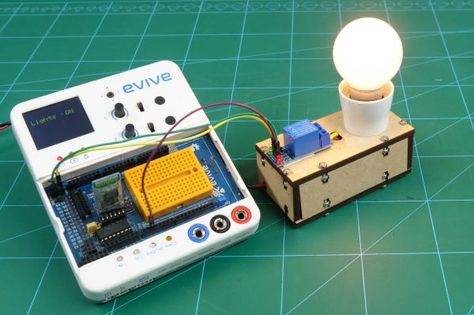With the advent of technology, our world is becoming increasingly connected. The Internet of Things (IoT) is revolutionizing how we interact with our surroundings, making everyday objects smarter and more efficient. From smart homes and wearables to industrial automation, IoT is rapidly transforming various industries. If you’re a tech enthusiast looking to dive into the world of IoT, this beginner’s guide is just for you.
Understanding IoT
IoT refers to the connection of ordinary objects or devices to the internet, allowing them to communicate with each other and exchange data. This network of interconnected devices enables us to remotely monitor and control them, making our lives more convenient and efficient. The possibilities with IoT are endless, and building your DIY projects in this realm can be both exciting and educational.
Getting Started: Choosing the Right Platform
Before diving into DIY IoT projects, you need to choose the right platform to work with. There are several options available, each with its own set of features and compatibility. Some popular platforms include Arduino, Raspberry Pi, and ESP32. These platforms offer a wide range of development boards and libraries, making them perfect for beginners.
If you’re new to programming and electronics, Arduino is an excellent starting point. It’s user-friendly and beginner-friendly, with a supportive community and extensive documentation. On the other hand, Raspberry Pi offers more computational power and is suitable for advanced IoT projects that require complex data processing.
Selecting Sensors and Actuators
Once you have chosen your IoT platform, the next step is to select sensors and actuators for your project. Sensors gather data from the environment, while actuators control physical devices based on that data. There are numerous options to choose from, depending on the nature of your project.
For example, if you want to build a weather monitoring system, you can use temperature and humidity sensors to collect relevant data. Similarly, if you’re interested in home automation, you may need actuators like relays or servo motors to control lights or appliances. It’s essential to select sensors and actuators that are compatible with your chosen platform and offer the functionalities you require.
Programming and Prototyping
Now that you have your platform and components, it’s time to start programming your IoT project. Most platforms have their own Integrated Development Environments (IDEs) and programming languages. Arduino, for instance, uses a simplified version of C++ and has an easy-to-use IDE.
Start by writing simple code to read sensor data and perform basic tasks. Gradually, you can expand your project and add more complex functionalities. Online tutorials, forums, and documentation are invaluable resources for learning and troubleshooting. Remember to prototype your project on a breadboard before soldering components onto a more permanent board to ensure everything works as expected.
Connectivity and Data Management
The essence of IoT lies in the connectivity and data exchange between devices. You need to decide how your IoT project will connect to the internet and centralize data management. Wi-Fi and Ethernet are common options for local connectivity, while technologies like Bluetooth and Zigbee are ideal for short-range connections.
Additionally, you must determine where your data will be stored and how you will retrieve it. Cloud platforms like AWS IoT or Google Cloud IoT Core offer convenient solutions, allowing you to securely store and access your sensor data. Protocols such as MQTT or HTTP can be used to transmit data to the cloud.
Security Considerations
As IoT devices become more prevalent, security concerns become paramount. Protecting your DIY IoT projects from potential vulnerabilities is crucial to ensure data privacy and prevent unauthorized access. Some security measures you should consider include:
Implementing strong passwords and encryption to secure communication channels.
Keeping your IoT devices and software up to date with the latest security patches.
Restricting access to your IoT network through proper network segmentation and firewalls.
Regularly monitoring and auditing your IoT project for any suspicious activity.
Conclusion
Building your DIY IoT projects can be an exciting and rewarding journey. By selecting the right platform, components, and programming your project, you can explore the endless possibilities offered by the IoT world. Just remember to plan your project carefully, ensure data security, and have fun as you bring your innovative ideas to life. Happy tinkering!
